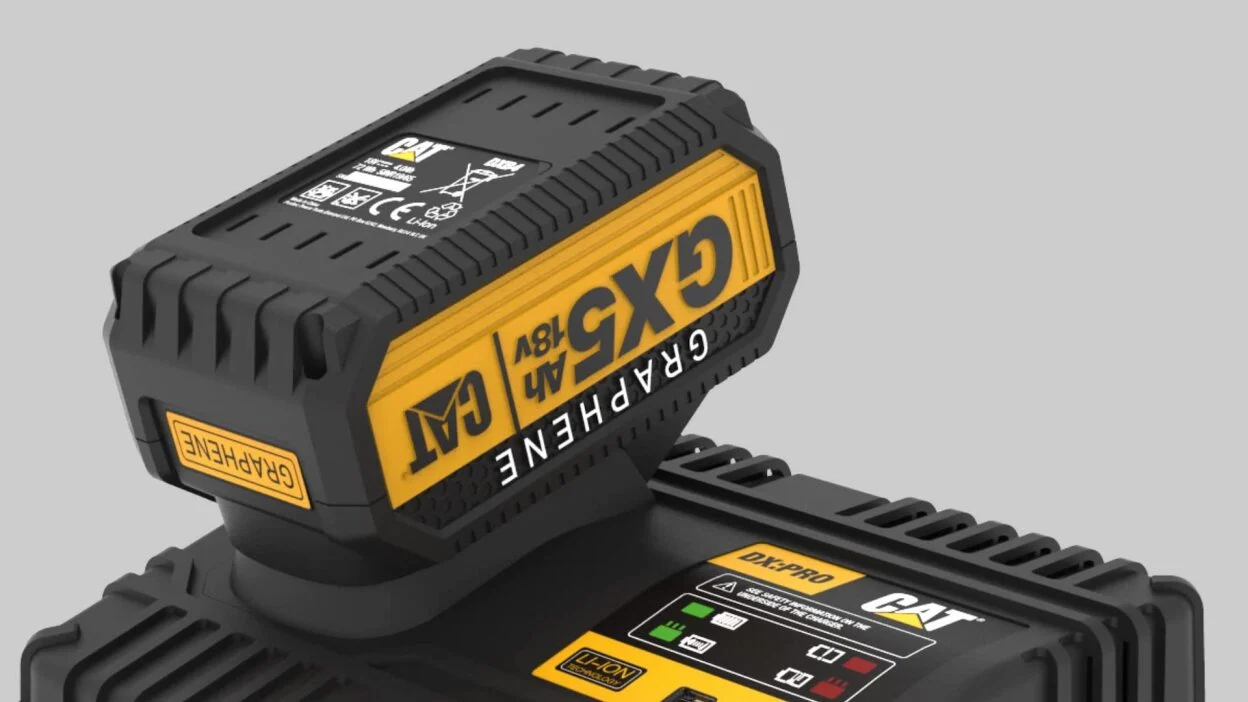
Cordless tools have been making strides over the past few years, as batteries become more advanced, smaller, and lighter. Lithium ion batteries have been slowly increasing their capacity and run time while shrinking in size and weight. But there’s a new material on the market for cordless tools: graphene, a lightweight material that has changed the battery game.
Graphene is a nano material
The basic structure of graphene is a single layer of carbon atoms that are spread out in a hexagonal shape to form a film. It’s so thin that it’s almost two-dimensional, and because of its shape, it’s highly conductive of both heat and electricity. Its unique shape makes it extremely strong for its thickness as well. Graphene batteries are being used for a wide range of projects, from electric vehicles to NASA’s flight program.
Graphene batteries charge faster and can power larger tools
Because graphene is so conductive, adding it to a traditional lithium ion battery can reduce charging time by three times. Graphene is 100 times more conductive than copper, to give you some idea of how much faster charging could become with graphene. This means needing fewer batteries on hand, as you won’t need to wait as long to charge one if you’re working on a big project. This technology can make cordless tools more practical even for larger projects.
Since the material allows for faster charging, it also allows for faster discharging, meaning that batteries with graphene can yield enough power for larger tools that use more power. Using a battery-powered chainsaw or concrete drill that runs for more than an hour could be in our near future. Cordless tools that are already popular like sanders and drills can benefit from increased torque.
Graphene batteries have a longer run time
Increased efficiency for graphene batteries also means longer run time, allowing you to go for hours between charges. Imagine running your shop tools until lunchtime and then charging batteries on a lunch break and using them for the rest of the day. Graphene batteries are also more heat resistant, allowing them to work for longer without overheating.
Where to find tools with graphene batteries
Right now, the only manufacturer on the market making tools with graphene batteries is CAT. Their 18-volt graphene battery is available at Lowe’s for $169.99. Since these batteries are only compatible with CAT tools for now, you’ll need to have that brand of cordless tools to benefit from the technology. The good news is that the graphene batteries are compatible with the CAT 1 For All system, so they will work with most existing CAT tools you might have.
Drawbacks to graphene batteries
Since graphene is a relatively new material, the batteries are more expensive—almost twice as much as a traditional lithium ion battery. There’s a limited selection of tools to choose from at the moment that will work with the current batteries, and unless you have a CAT cordless system already, you would need to replace any tools you have to match with the new CAT graphene batteries.
What to expect in the future
As the technology develops, graphene will likely become more widely available for a wider range of cordless tools. Rumors are circulating that some other major cordless tool brands are working on graphene batteries for their tools, so keep an eye out for those in the near future. As the technology becomes more widely available, graphene batteries should also become more affordable.
